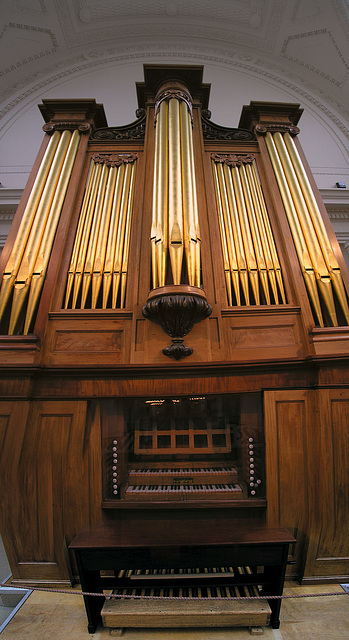Pipe Organ Graffiti (7693)
Temple of Dendur (7711)
Temple of Dendur (7713)
Temple of Dendur (7715)
Temple of Dendur (7716)
Temple of Dendur (7717)
Temple of Dendur (7718)
Temple of Dendur (7719)
Temple of Dendur (7721)
Temple of Dendur Visitors (7714)
Ugolino And His Sons - Jean-Baptiste Carpeaux (767…
Ugolino And His Sons - Jean-Baptiste Carpeaux (767…
Ugolino And His Sons - Jean-Baptiste Carpeaux (767…
Ugolino And His Sons - Jean-Baptiste Carpeaux (767…
Lucius Verus (7642)
Marsyas by Balthasar Permoser (7666)
MM - (0795)
Perseus with the head of Medusa - Antonio Canova (…
Perseus with the head of Medusa - Antonio Canova (…
Piano (7698)
Posthumous Portrait of a Queen as Parvat - Detail…
Priapus - Pietro Bernini - 1616 (7664)
Sarcophagus of Harkhebi (7708)
Pipe Organ - Thomas Appleton (7696)
Pipe Organ - Thomas Appleton (7694)
Prow of ritual canoe from New Guinea (0777)
Carved figures from New Guinea (7653)
Asmat Bis Poles - from Papua New Guinea (7650)
Asmat Bis Poles - from Papua New Guinea (7649)
Asmat Bis Pole - from Papua New Guinea (7652)
Asmat Bis Pole - from Papua New Guinea (7651)
Asmat Bis Pole - from Papua New Guinea (0774)
La Frileuse - Jean-Antoine Houdon - 1787 (7672)
La Frileuse - Jean-Antoine Houdon - 1787 (7671)
La Frileuse - Jean-Antoine Houdon - 1787 (7669)
La Frileuse - Jean-Antoine Houdon - 1787 (7668)
Kongo Power Figure (7680)
Kongo Power Figure (7678)
July Hay - Thomas Hart Benton (0787)
Indian Meeting Hall Element (7686)
Hermes (7646)
Gustav Mahler by Auguste Rodin (0778)
Grave Marker of Kallidemos (7634)
Grave Marker - Greek (7633)
Full Nipple Shield (7648)
Keywords
Pipe Organ - Thomas Appleton


"PIPE ORGAN
"Boston, 1830
"Thomas Appleton (1785-1872)
"The oldest and finest extant product of the renowned Boston craftsman, Thomas Appleton. Built in 1830. perhaps for South Church in Hartford, Connecticut, it was reinstalled by Emmons Howard in 1883 at Sacred Heart Church in Plains, Pennsylvania, where it was discovered unused and neglected in 1980. The organ's conservative tonal design and mahogany Greek revival case reflect British models of the late 18th century.
"Standing over 15 feet tall, with gold-leafed facade pipes (diapasons), the organ comprises 16 ranks, totaling 836 pipes, two 58-tone manuals and a 27-note pedalboard, the latter replacing a shorter original. A hand-pump on the organ's right side supplies wind to the bellows. The pipes of the upper manual are mainly enclosed in an elevated box with louvres that can be opened by means of a pedal for dynamic expression. The rest of the manual pipes are disposed above the recessed console, while the blowing apparatus and key and stop mechanisms occupy the lower part of the case. The pedal rank rests on a separate windchest behind the case. Tuning is in unequal temperament, pitched at A=435.7 Hz.
"Appleton's carving and joinery are particularly skillful. Before being hired by the prominent organ builder William Goodrich in 1807, Appleton had served an apprenticeship with the cabinetmaker Elisha Larned, doubtless under the influence of his father, a house carpenter. Following a period of partnership with the piano makers Hayt and Alpheus Babcock, Appleton opened his own shop in 1820. In 1839 the Massachusetts Charitable Mechanics Association awarded him a gold medal, and his reputation continued to grow until he retired in 1869, by which time his numerous instruments were serving churches as distant as California and South Carolina."
"Boston, 1830
"Thomas Appleton (1785-1872)
"The oldest and finest extant product of the renowned Boston craftsman, Thomas Appleton. Built in 1830. perhaps for South Church in Hartford, Connecticut, it was reinstalled by Emmons Howard in 1883 at Sacred Heart Church in Plains, Pennsylvania, where it was discovered unused and neglected in 1980. The organ's conservative tonal design and mahogany Greek revival case reflect British models of the late 18th century.
"Standing over 15 feet tall, with gold-leafed facade pipes (diapasons), the organ comprises 16 ranks, totaling 836 pipes, two 58-tone manuals and a 27-note pedalboard, the latter replacing a shorter original. A hand-pump on the organ's right side supplies wind to the bellows. The pipes of the upper manual are mainly enclosed in an elevated box with louvres that can be opened by means of a pedal for dynamic expression. The rest of the manual pipes are disposed above the recessed console, while the blowing apparatus and key and stop mechanisms occupy the lower part of the case. The pedal rank rests on a separate windchest behind the case. Tuning is in unequal temperament, pitched at A=435.7 Hz.
"Appleton's carving and joinery are particularly skillful. Before being hired by the prominent organ builder William Goodrich in 1807, Appleton had served an apprenticeship with the cabinetmaker Elisha Larned, doubtless under the influence of his father, a house carpenter. Following a period of partnership with the piano makers Hayt and Alpheus Babcock, Appleton opened his own shop in 1820. In 1839 the Massachusetts Charitable Mechanics Association awarded him a gold medal, and his reputation continued to grow until he retired in 1869, by which time his numerous instruments were serving churches as distant as California and South Carolina."
- Keyboard shortcuts:
Jump to top
RSS feed- Latest comments - Subscribe to the comment feeds of this photo
- ipernity © 2007-2024
- Help & Contact
|
Club news
|
About ipernity
|
History |
ipernity Club & Prices |
Guide of good conduct
Donate | Group guidelines | Privacy policy | Terms of use | Statutes | In memoria -
Facebook
Twitter

Sign-in to write a comment.